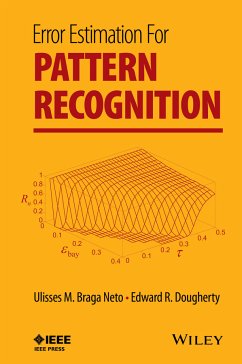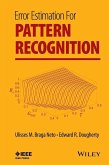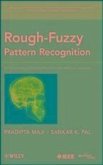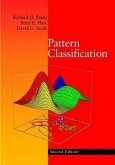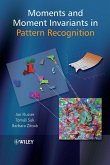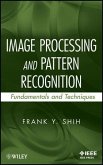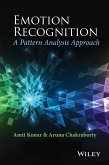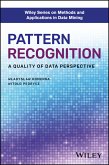This book is the first of its kind to discuss error estimation with a model-based approach. From the basics of classifiers and error estimators to distributional and Bayesian theory, it covers important topics and essential issues pertaining to the scientific validity of pattern classification.
Error Estimation for Pattern Recognition focuses on error estimation, which is a broad and poorly understood topic that reaches all research areas using pattern classification. It includes model-based approaches and discussions of newer error estimators such as bolstered and Bayesian estimators. This book was motivated by the application of pattern recognition to high-throughput data with limited replicates, which is a basic problem now appearing in many areas. The first two chapters cover basic issues in classification error estimation, such as definitions, test-set error estimation, and training-set error estimation. The remaining chapters in this book cover results on the performance and representation of training-set error estimators for various pattern classifiers.
Additional features of the book include:
. The latest results on the accuracy of error estimation
. Performance analysis of re-substitution, cross-validation, and bootstrap error estimators using analytical and simulation approaches
. Highly interactive computer-based exercises and end-of-chapter problems
This is the first book exclusively about error estimation for pattern recognition.
Ulisses M. Braga Neto is an Associate Professor in the Department of Electrical and Computer Engineering at Texas A&M University, USA. He received his PhD in Electrical and Computer Engineering from The Johns Hopkins University. Dr. Braga Neto received an NSF CAREER Award for his work on error estimation for pattern recognition with applications in genomic signal processing. He is an IEEE Senior Member.
Edward R. Dougherty is a Distinguished Professor, Robert F. Kennedy '26 Chair, and Scientific Director at the Center for Bioinformatics and Genomic Systems Engineering at Texas A&M University, USA. He is a fellow of both the IEEE and SPIE, and he has received the SPIE Presidents Award. Dr. Dougherty has authored several books including Epistemology of the Cell: A Systems Perspective on Biological Knowledge and Random Processes for Image and Signal Processing (Wiley-IEEE Press).
Hinweis: Dieser Artikel kann nur an eine deutsche Lieferadresse ausgeliefert werden.
Error Estimation for Pattern Recognition focuses on error estimation, which is a broad and poorly understood topic that reaches all research areas using pattern classification. It includes model-based approaches and discussions of newer error estimators such as bolstered and Bayesian estimators. This book was motivated by the application of pattern recognition to high-throughput data with limited replicates, which is a basic problem now appearing in many areas. The first two chapters cover basic issues in classification error estimation, such as definitions, test-set error estimation, and training-set error estimation. The remaining chapters in this book cover results on the performance and representation of training-set error estimators for various pattern classifiers.
Additional features of the book include:
. The latest results on the accuracy of error estimation
. Performance analysis of re-substitution, cross-validation, and bootstrap error estimators using analytical and simulation approaches
. Highly interactive computer-based exercises and end-of-chapter problems
This is the first book exclusively about error estimation for pattern recognition.
Ulisses M. Braga Neto is an Associate Professor in the Department of Electrical and Computer Engineering at Texas A&M University, USA. He received his PhD in Electrical and Computer Engineering from The Johns Hopkins University. Dr. Braga Neto received an NSF CAREER Award for his work on error estimation for pattern recognition with applications in genomic signal processing. He is an IEEE Senior Member.
Edward R. Dougherty is a Distinguished Professor, Robert F. Kennedy '26 Chair, and Scientific Director at the Center for Bioinformatics and Genomic Systems Engineering at Texas A&M University, USA. He is a fellow of both the IEEE and SPIE, and he has received the SPIE Presidents Award. Dr. Dougherty has authored several books including Epistemology of the Cell: A Systems Perspective on Biological Knowledge and Random Processes for Image and Signal Processing (Wiley-IEEE Press).
Dieser Download kann aus rechtlichen Gründen nur mit Rechnungsadresse in D ausgeliefert werden.
Hinweis: Dieser Artikel kann nur an eine deutsche Lieferadresse ausgeliefert werden.

